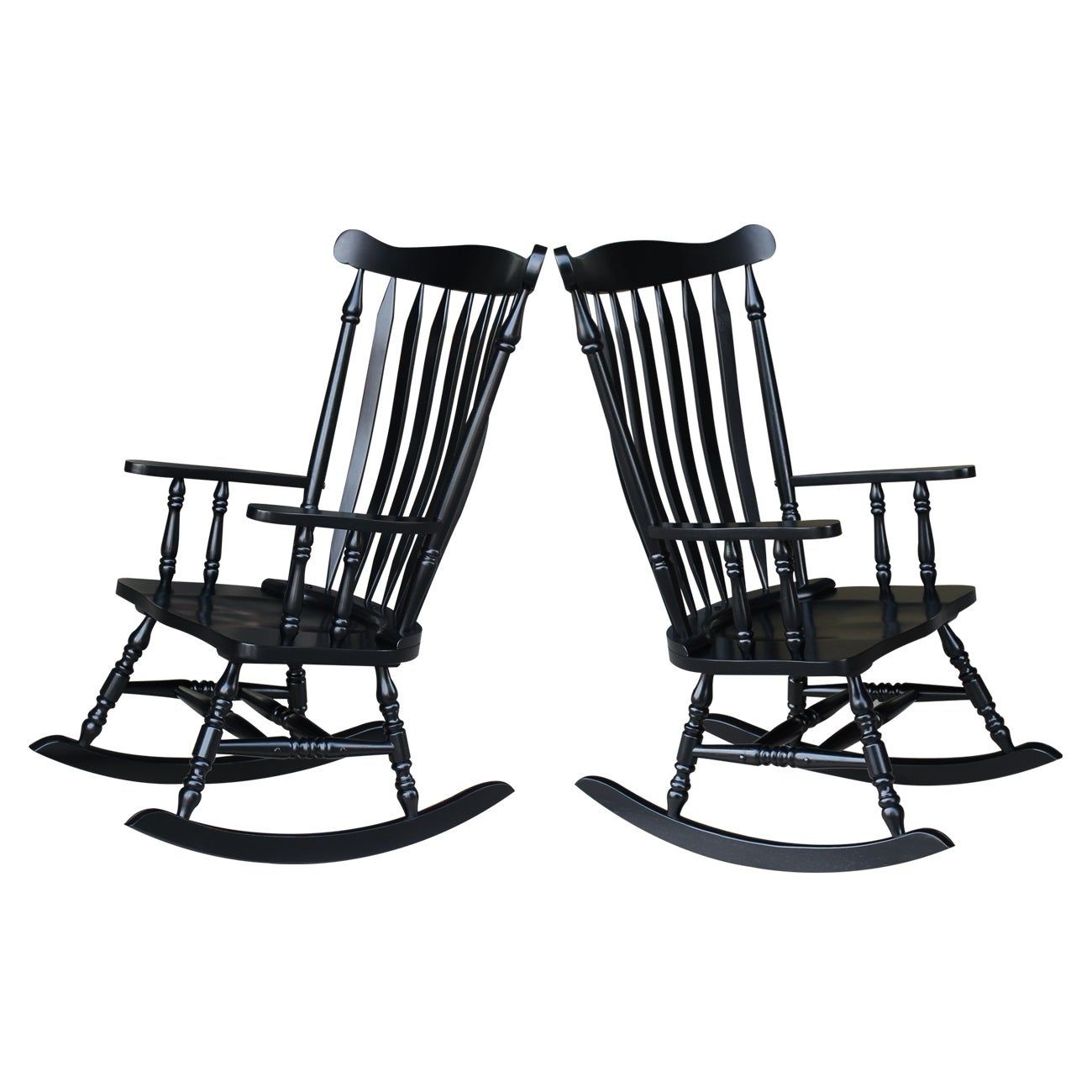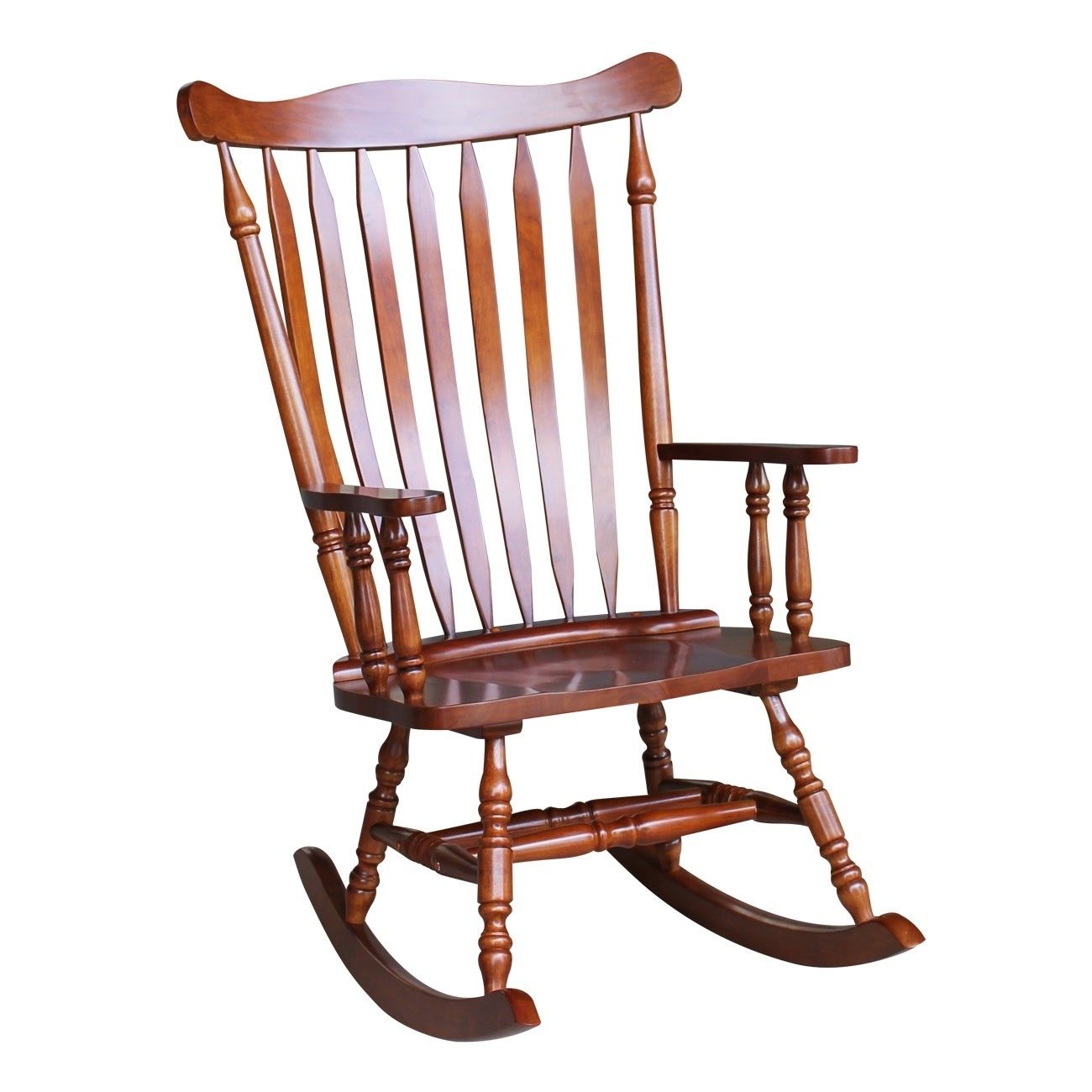Design Features and Characteristics

Colonial antique black rocking chairs are a timeless piece of furniture, renowned for their elegance and durability. They embody the simplicity and practicality of the colonial era, with distinctive design elements and masterful craftsmanship.
These chairs are characterized by their simple yet elegant form, often featuring a curved back with a slight rise, a comfortable seat, and sturdy, gracefully curved rockers. The overall design is intended to provide both comfort and stability, making them ideal for relaxation and contemplation.
Craftsmanship and Construction Techniques
The construction of colonial antique black rocking chairs reflects the skilled craftsmanship of the time. The chairs are typically made from hardwoods such as oak, maple, or cherry, known for their strength and durability. The wood is carefully selected and seasoned to ensure its longevity.
- Mortise and Tenon Joints: These chairs are often constructed using mortise and tenon joints, a traditional woodworking technique that creates a strong and durable bond between the different pieces of wood. This method involves creating a hole (mortise) in one piece of wood and a corresponding projection (tenon) on another piece, which are then fitted together.
- Dovetail Joints: Dovetail joints, which feature interlocking, wedge-shaped pieces, are often used for joining the seat to the chair’s frame. These joints provide exceptional strength and prevent the seat from coming loose over time.
- Hand-Carved Details: Many colonial rocking chairs feature hand-carved details, such as intricate scrollwork on the back, seat, or rockers. These details add to the chair’s aesthetic appeal and showcase the artisan’s skill.
Variations in Style and Materials
Colonial antique black rocking chairs come in a variety of styles and materials, reflecting regional preferences and the evolution of design.
- Windsor Chairs: Windsor chairs, known for their simple yet elegant design, often feature a curved back and a spindle-shaped seat. They are typically made from various woods, including maple, cherry, and walnut, and often feature painted finishes.
- Ladderback Chairs: Ladderback chairs, with their vertical slats on the back, were popular in the 18th century. These chairs are often made from oak, cherry, or walnut and feature a variety of seat styles, including rush seats, cane seats, and upholstered seats.
- Slat-Back Chairs: Slat-back chairs, characterized by their horizontal slats on the back, were another popular style during the colonial period. They are often made from oak, maple, or pine and feature a variety of seat styles, including rush seats, cane seats, and upholstered seats.
The Significance of the Black Finish, Colonial antique black rocking chair
The black finish, often achieved through the use of paints or stains, was a popular choice for colonial furniture.
- Durability: The black finish provided a protective layer that helped to preserve the wood from wear and tear, extending the furniture’s lifespan.
- Elegance: The black finish added a touch of sophistication and formality to the furniture, making it suitable for both formal and informal settings.
- Versatility: The black finish was versatile and could be used on a variety of furniture styles, from simple to ornate.
Cultural and Social Significance: Colonial Antique Black Rocking Chair

Rocking chairs, with their gentle swaying motion and comforting presence, held a prominent place in colonial society, transcending mere furniture to become integral to family life, cultural expression, and the very fabric of daily existence.
The Rocking Chair’s Role in Colonial Family Life
The rocking chair was a constant companion in colonial homes, serving as a versatile piece of furniture that accommodated a wide range of activities.
- Families gathered in the evenings, rocking gently as they shared stories, sang songs, and strengthened familial bonds. The rhythmic motion provided a soothing backdrop for conversation and connection.
- Mothers rocked their babies to sleep, the gentle sway mimicking the comforting motion of a mother’s arms. Rocking chairs were also used for tending to children, providing a safe and secure space for nurturing and care.
- The rocking chair served as a workspace for various tasks, from sewing and knitting to mending and reading. The gentle rocking motion helped to ease the strain of repetitive tasks, allowing for increased productivity and comfort.
Symbolism and Cultural Associations
The rocking chair’s association with tranquility, comfort, and domesticity made it a potent symbol of home and family life in colonial America.
- The rocking chair represented a haven from the outside world, a place where individuals could unwind, reflect, and find solace.
- Its association with the elderly and wisdom further cemented its role as a symbol of tradition and continuity. The rocking chair became a place where elders shared their life stories and imparted valuable lessons to younger generations.
- The rocking chair was often featured in colonial art and literature, reinforcing its symbolic significance and cultural importance.
Stories and Anecdotes of Colonial Families
Numerous stories and anecdotes illustrate the profound impact of rocking chairs on colonial families.
- One account tells of a family gathering around the fireplace, with the grandmother rocking gently in her chair as she shared stories of her youth, her rhythmic rocking motion captivating the attention of her grandchildren.
- Another story recounts a mother rocking her infant to sleep, the gentle sway lulling the child into a peaceful slumber, while she herself found solace in the rhythmic motion and the comforting presence of her child.
- The rocking chair was often the setting for important conversations and decisions, where families gathered to discuss matters of faith, politics, and the future of their community.
A colonial antique black rocking chair evokes a sense of history and craftsmanship, its smooth, worn wood telling tales of generations past. While its purpose may have shifted from a grand gesture of hospitality to a comforting haven for a weary soul, the essence of gentle rocking remains.
This same gentle rocking finds new life in the baby rocker chair india , offering comfort and a sense of security to the youngest members of a family. The colonial antique black rocking chair, though a relic of a bygone era, continues to serve as a reminder of the enduring power of simple, comforting gestures, passed down through generations, from rocking chair to baby rocker.
A colonial antique black rocking chair evokes a sense of history and timeless elegance. Its simple lines and sturdy construction speak of a bygone era. While the antique chair may lack the plush comfort of a modern tufted upholstered wingback rocking chair , its enduring presence and quiet dignity continue to inspire a sense of peace and reflection.
The colonial antique chair serves as a reminder of the enduring strength and beauty that can be found in simple, handcrafted objects.
